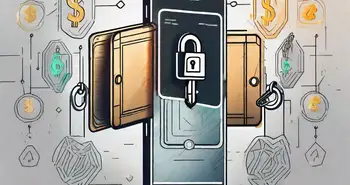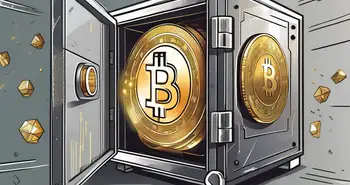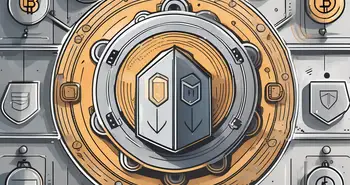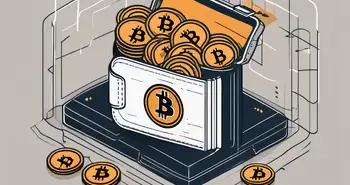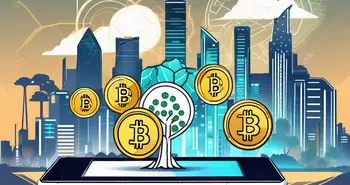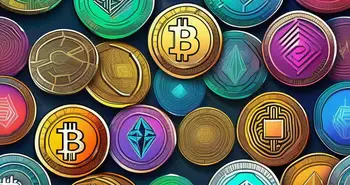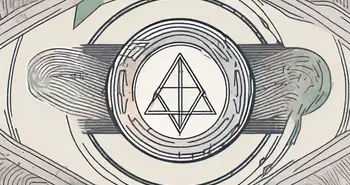What Constitutes Real World Assets (RWAs) in Cryptocurrency

In the world of cryptocurrency, real world assets (RWAs) play a crucial role in bridging the gap between the digital and physical realms. As an expert in this field, I am excited to take you on a journey to explore what constitutes RWAs and why they are so significant in the cryptocurrency landscape.
Understanding the Concept of Real World Assets (RWAs)
Before we dive deeper, let's start by defining what exactly we mean by real world assets. RWAs are tangible or intangible assets that have an intrinsic value in the physical world. They can range from properties, commodities, and precious metals to intellectual property rights and even artwork.
Real world assets encompass a wide range of assets that have inherent value beyond the digital sphere. Unlike purely digital assets, RWAs are tied to something physical, giving them a sense of stability and utility. This linkage to the tangible world is what makes RWAs particularly interesting in the realm of cryptocurrency.
When we talk about real world assets, we are referring to assets that have a physical presence or are backed by physical goods. For example, a piece of real estate is a tangible asset that can be seen and touched. It has value in the real world, and this value can be leveraged in various financial transactions.
Similarly, commodities like gold, silver, and oil are real world assets. These assets have been sought after for centuries due to their intrinsic value and the role they play in various industries. They have a physical presence and are used in the production of goods and services.
Intellectual property rights, such as patents, copyrights, and trademarks, are also considered real world assets. While they may not have a physical form, they represent legal rights and have value in the real world. These assets can be bought, sold, and licensed, generating income for their owners.
Artwork, whether it's a painting, sculpture, or any other form of artistic expression, is another example of a real world asset. These pieces have aesthetic and cultural value and can be bought and sold in the art market. They often appreciate in value over time, making them attractive investments.
The Role of RWAs in the Financial World
RWAs have long been an essential component of traditional financial systems. They have been used as collateral for loans, investment opportunities, and as a means of preserving wealth. However, with the rise of cryptocurrency, RWAs have found a new and exciting role to play.
In the world of cryptocurrency, RWAs are being tokenized, meaning they are being represented in digital form on a blockchain. This allows investors to buy and trade fractional ownership of these assets, opening up new investment opportunities. Tokenization provides liquidity and accessibility to real world assets that were previously limited to a select few.
Furthermore, the use of smart contracts on blockchain platforms enables the automation of various processes related to RWAs. This includes the verification of ownership, the transfer of assets, and even the distribution of revenue generated by the assets. These advancements in technology have made it easier for individuals and institutions to participate in the real world asset market.
Real world assets have also gained attention in the decentralized finance (DeFi) space. DeFi platforms allow users to lend, borrow, and earn interest on their real world assets without the need for intermediaries like banks. This opens up new avenues for financial inclusion and empowers individuals to have more control over their assets and investments.
Overall, the concept of real world assets has evolved and expanded in the digital age. They continue to play a crucial role in traditional financial systems, while also finding new opportunities in the world of cryptocurrency and decentralized finance. As technology continues to advance, we can expect further innovation and integration of real world assets into the digital landscape.
The Intersection of Cryptocurrency and RWAs
In recent years, we have witnessed an intriguing convergence between cryptocurrency and RWAs. This convergence has been made possible by the revolutionary technology known as blockchain. Let's explore the evolution of this intersection and the impact it has had.
The Evolution of Cryptocurrency and RWAs
When cryptocurrencies first emerged, they were primarily seen as digital assets that existed independent of the physical world. However, as the technology matured, the concept of tokenization emerged, allowing for the representation of real world assets on the blockchain.
Tokenization refers to the process of creating digital representations of physical assets, such as real estate or fine art, by issuing tokens on a blockchain. These tokens are backed by the underlying physical assets, effectively bridging the gap between the digital and physical worlds.
This concept of tokenization has gained significant traction in recent years, with numerous projects and platforms emerging to facilitate the tokenization of various RWAs. Real estate, for example, has been a prime candidate for tokenization, as it allows for fractional ownership and increased liquidity. Investors can now own a fraction of a property by purchasing tokens, which can be easily traded on blockchain-based exchanges.
Similarly, fine art, which was traditionally limited to a select few collectors and investors, can now be tokenized, allowing art enthusiasts from around the world to own a piece of their favorite artwork. This democratization of ownership has opened up new opportunities for artists and investors alike.
The Impact of Blockchain Technology on RWAs
The impact of blockchain technology on RWAs cannot be overstated. It has opened up new possibilities for ownership, trade, and transparency. With blockchain, the ownership of RWAs can be easily verified and transferred, eliminating the need for intermediaries and reducing the risk of fraud.
Furthermore, the use of smart contracts on blockchain platforms enables the automation of transactions and the enforcement of contractual agreements. This level of efficiency and trust has the potential to revolutionize various industries, including real estate, supply chain management, and intellectual property rights.
For instance, in the real estate industry, blockchain-based platforms can streamline the process of buying and selling properties. Smart contracts can automatically execute transactions once predefined conditions are met, eliminating the need for lengthy paperwork and reducing the risk of human error. Additionally, the transparency provided by blockchain technology allows potential buyers to verify the ownership history and title of a property, increasing trust and reducing the need for costly title insurance.
In supply chain management, blockchain can provide a secure and immutable record of the movement of goods, ensuring transparency and traceability. This can help prevent counterfeiting, improve efficiency, and reduce costs. By tokenizing physical assets, such as inventory or raw materials, companies can also enhance liquidity and unlock new financing options.
Moreover, blockchain technology has the potential to revolutionize intellectual property rights. By registering creations on a blockchain, artists, musicians, and writers can prove ownership and protect their work from unauthorized use. Smart contracts can automatically enforce licensing agreements and ensure that creators are properly compensated for their work.
In conclusion, the intersection of cryptocurrency and RWAs has evolved significantly thanks to blockchain technology. The tokenization of real world assets has opened up new opportunities for ownership and investment, while the use of smart contracts has revolutionized the way transactions are executed and contractual agreements are enforced. As blockchain continues to mature, we can expect even greater innovation and disruption in the intersection of cryptocurrency and RWAs.
Types of Real World Assets in Cryptocurrency
Now that we understand the intersection between cryptocurrency and RWAs, let's explore the different types of RWAs that can be found in the cryptocurrency space.
But before we dive into the specifics, let's take a moment to appreciate the revolutionary nature of this concept. The idea of bridging the physical world with the digital realm through blockchain technology is nothing short of groundbreaking. It opens up a world of possibilities and disrupts traditional financial systems.
Cryptocurrency as an RWA
One of the most prominent types of RWAs in cryptocurrency is the cryptocurrency itself. Bitcoin, Ethereum, and other cryptocurrencies have become valuable assets that are actively traded and held as a store of value.
Bitcoin, the first and most well-known cryptocurrency, has gained widespread recognition as a digital gold. Its limited supply and decentralized nature have attracted investors seeking a hedge against inflation and traditional market volatility.
Ethereum, on the other hand, goes beyond being just a digital currency. It is a platform that enables the creation of smart contracts and decentralized applications (DApps). This versatility has positioned Ethereum as a valuable asset with a wide range of use cases.
The rise of decentralized finance (DeFi) has further solidified cryptocurrencies as RWAs that offer opportunities for lending, borrowing, and earning interest. DeFi platforms leverage blockchain technology to provide financial services without the need for intermediaries, making them more accessible and efficient.
Tokenization of Physical Assets
Another exciting development is the tokenization of physical assets. Through tokenization, assets such as real estate, artwork, and even rare collectibles can be represented as digital tokens on the blockchain.
This innovative approach brings numerous benefits to the table. For instance, tokenization allows for fractional ownership, enabling individuals to invest in high-value assets that were previously out of reach. It also enhances liquidity, as these tokens can be easily bought, sold, and traded on various cryptocurrency exchanges.
Furthermore, tokenization improves accessibility to traditionally illiquid assets. Real estate, for example, has long been considered a relatively illiquid investment due to the high entry barriers and lengthy transaction processes. By tokenizing real estate, investors can now gain exposure to this asset class with greater ease and flexibility.
Artwork, too, has seen a significant transformation through tokenization. Previously, investing in art required substantial capital and expertise. With tokenization, art enthusiasts can now own a fraction of a valuable painting or sculpture, democratizing the art market and allowing for broader participation.
It's worth noting that tokenization also introduces new challenges and considerations. Ensuring the authenticity and provenance of tokenized assets, for instance, becomes crucial to maintain trust and credibility within the ecosystem. Nonetheless, the potential benefits of tokenizing physical assets are undeniable.
In conclusion, the world of cryptocurrency offers a diverse range of RWAs that go beyond traditional financial instruments. From cryptocurrencies themselves to the tokenization of physical assets, this emerging field continues to push boundaries and reshape the way we perceive and interact with value.
The Significance of RWAs in Cryptocurrency
So, why are RWAs so significant in the realm of cryptocurrency? Let's take a closer look at the advantages they bring and the potential risks and challenges they may present.
Advantages of RWAs in Cryptocurrency
RWAs offer several advantages in the cryptocurrency space. Firstly, they provide stability and intrinsic value to an otherwise volatile and speculative market. This can attract traditional investors who are seeking a more tangible and secure investment option.
Secondly, RWAs bring increased liquidity to the cryptocurrency market. By allowing investors to trade digital tokens that represent physical assets, the market becomes more accessible and flexible. This liquidity can bring forth new investment opportunities and foster innovation in various sectors.
Potential Risks and Challenges
However, it's important to acknowledge that there are potential risks and challenges associated with RWAs in cryptocurrency. Regulatory issues, fraudulent activities, and determining the true value of tokenized assets are some of the challenges that both investors and the industry as a whole must navigate.
As an expert in this field, I encourage individuals and businesses to conduct thorough research, seek reputable platforms, and stay informed about the evolving regulatory landscape to mitigate these risks and make informed decisions.
The Future of RWAs in Cryptocurrency
Looking ahead, the future of RWAs in cryptocurrency holds great promise. Let's explore some of the emerging trends and make predictions for what lies ahead.
Emerging Trends in RWAs and Cryptocurrency
One emerging trend is the increased adoption of decentralized exchanges (DEXs) that allow for the seamless exchange of tokenized RWAs. These DEXs leverage blockchain technology to provide liquidity for real world assets without relying on centralized intermediaries.
Additionally, we can expect to see a wider variety of asset classes being tokenized, including commodities, intellectual property, and revenue-sharing agreements. This expansion will further democratize access to investment opportunities and unlock new possibilities for economic growth.
Predictions for RWAs in the Cryptocurrency Space
In the coming years, RWAs are likely to become an integral part of the cryptocurrency ecosystem. As more industries recognize the potential of blockchain technology and embrace the concept of tokenization, we can expect to see a greater convergence between the digital and physical worlds.
As an expert in this field, my advice would be to stay informed, embrace new technologies, and seize the opportunities that arise from the intersection of cryptocurrency and RWAs. Whether you are an investor, a business owner, or a passionate enthusiast, understanding and leveraging this emerging field can lead to exciting opportunities and significant financial gains.
In conclusion, RWAs have become a defining element of the cryptocurrency landscape. Their convergence with blockchain technology has opened up a world of possibilities, transforming the way we perceive and interact with both digital and physical assets. As the cryptocurrency space continues to evolve, RWAs will undoubtedly play a pivotal role in shaping its future. It's an exciting time to be part of this revolution!
As you consider the potential of stock trading and the broader cryptocurrency landscape, why not expand your investment horizon with Morpher? At Morpher.com, you can leverage the power of blockchain technology to trade across a multitude of asset classes, including cryptocurrencies, without the burden of fees or liquidity constraints. With the ability to engage in fractional investing, short selling, and up to 10x leverage, Morpher offers a unique and flexible trading experience that aligns perfectly with the innovative spirit of crypto mining. Take control of your investments with the safety of the Morpher Wallet and explore new market opportunities today. Sign Up and Get Your Free Sign Up Bonus to embark on a transformative trading journey with Morpher.

Disclaimer: All investments involve risk, and the past performance of a security, industry, sector, market, financial product, trading strategy, or individual’s trading does not guarantee future results or returns. Investors are fully responsible for any investment decisions they make. Such decisions should be based solely on an evaluation of their financial circumstances, investment objectives, risk tolerance, and liquidity needs. This post does not constitute investment advice.

Painless trading for everyone
Hundreds of markets all in one place - Apple, Bitcoin, Gold, Watches, NFTs, Sneakers and so much more.

Painless trading for everyone
Hundreds of markets all in one place - Apple, Bitcoin, Gold, Watches, NFTs, Sneakers and so much more.

